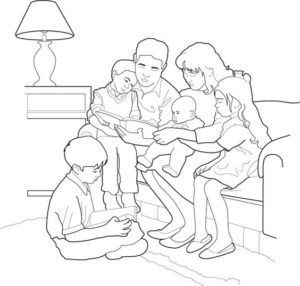Last week I talked about being a multi-genre reader and writer. This week I’d like to focus on the reader part and next week on the writer part.
There are readers who basically read just one genre. Whether it’s romance or mysteries or fantasies or westerns or horror, they are satisfied with the variety their chosen genre provides. And there is a certain comfort in knowing what the book will be like even before you start. There are enough writers out there that one will not exhaust the possibilities in any given genre.
Other readers like variety. They’ll read a horror novel and follow it up with a mystery and then a mainstream novel and will read a biography after that. These readers like to experience the limitless variety that is the reader’s world. And, as they say, variety is the spice of life.
I liken it to the person who wants meat and potatoes for every dinner and the one who wants spaghetti one night, cabbage curry the next, sausage and potatoes on the third, and Lobster Thermidor on the fourth.
We like what we like, after all. It is a reflection of who we are. And whatever one’s choice of reading material, if it works — it works.
From my perspective, when it comes to reading, less does not equal more. For me, more genres equals more pleasure. More adventure!
This partly reflects, I think, my broad range of interests.
After a long period of not reading non-fiction, I’ve started to get back into it. I’ve picked up a biography of a WW II German U-Boat ace. The travelogue of the R34’s flight from England to America and back. I’ve read a book and articles on marketing. I’m getting back into philosophy. I’m partway into a book that is part biography and part history of the zeppelin by Ernst Lehmann. And recently my nephew was showing me his copy of the Encyclopedia of Ships and I know I have to get myself a copy so I can read it in more detail. These books reflect some of the wide range of topics I’m interested in.
On the fiction side of things, I’ve been reading horror and dieselpunk of late, but also some libertarian science fiction, a fantasy mystery, and am currently reading a coming of age literary novel.
And I don’t just read what I like. For example, I’m not partial to YA (young adult) literature. Yet one of my favorite authors is YA writer Daniel Pinkwater and one of my all time favorite books is his Wingman. Last year I read Catherine, Called Birdy by Karen Cushman and thoroughly enjoyed it.
I’m also not partial to coming of age novels or stories and yet I bought and am currently reading Billy Maddox Takes His Shot by Jay Lemming. And again, am enjoying this read by a new indie author.
Reading is, in my opinion, the best way to explore possibilities. Movies can do that to some degree, but not as well as a book because of how one approaches the two forms. With movies, the viewer is essentially passive. He or she is acted upon by the film.
With a book, the reader must use his or her mind. There is a collaboration between reader and writer that is needed in order to reach an understanding of the text’s meaning. No matter what the author intends, I as reader can’t approach the text with the author’s experiences. I can only do so with mine and therefore what I get out of the book is unique to me.
A friend of mine and I were discussing a poem I’d written. He made the comment, “I don’t think you understand what you’ve written.” He clearly saw something in the poem I didn’t. His experience picked up on the words I’d written and he saw something that I didn’t intend in writing the poem, which came from my experiences.
I don’t think that happens very often when we watch movies due to the passivity of the experience. Movies are passive entertainment and books are active entertainment.
Because of the active engagement, I think reading is the best form of entertainment — and it needn’t be a solo endeavor.
Family reading time is a wonderful way to spend time together. With or without popcorn!
I introduced my daughter to some of my favorite books during family reading time. She shared books with all of us that she wanted to read, such as Daddy Long Legs by Jean Webster. An aside here. Jean Webster’s heroines are strong young women in an age when women weren’t expected to be. Her books are very readable today. Webster died in 1916 at 39 years of age in childbirth.
My wife and I read The Hunger Games out loud together. A great way to spend an evening or several evenings.
If you aren’t an avid recreational reader, I encourage you to rediscover books. Add books to family or couple time. Like bread, books really are the staff of life.
Comments are always welcome and until next time — happy reading!
Share This!
